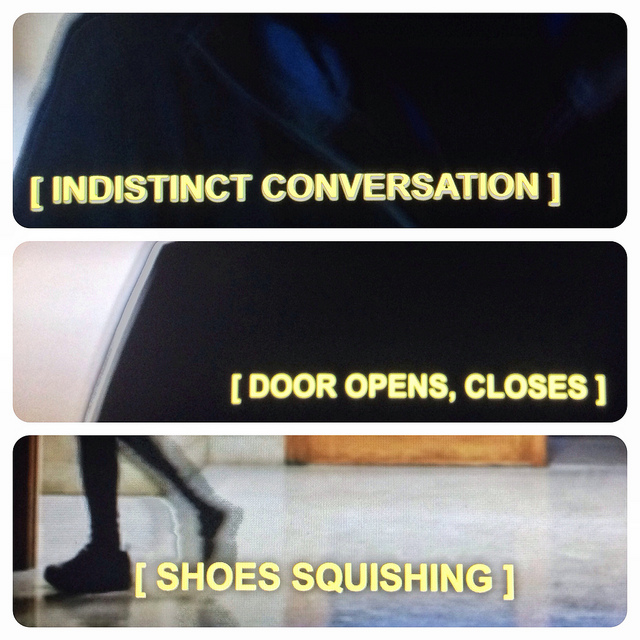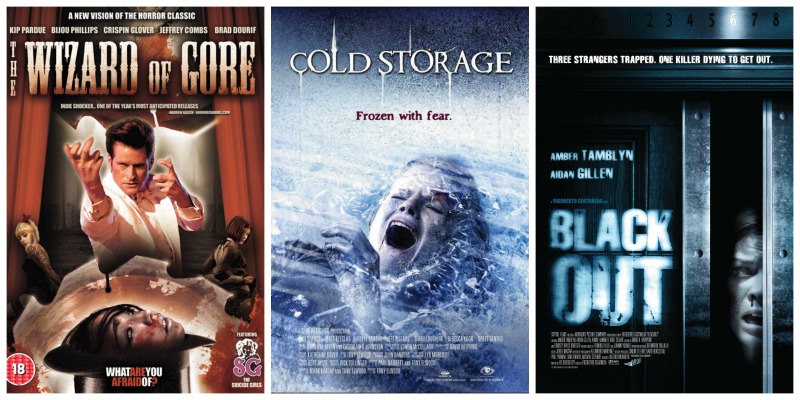
Marketing a horror film-the trailer
One of the absolute strongest pieces of marketing you will create for your film is its trailer. The other is the key art. I wish more filmmakers appreciated how important having a kick ass trailer is and stop trying to save money by editing it themselves or having their feature editor do it. A horror film audience is typically younger and very distracted. A trailer that fails to capture attention in less than 5 seconds is easily turned off in the quest to find something more interesting.
I spoke with professional trailer editor Michael Kurthy of Ye Olde Trailer Shoppe, Inc. about what goes into editing film trailers, especially horror trailers.
SC:What is the first thing you do when you sit down to edit? How do you evaluate the film to choose the elements that will go into a compelling trailer?
MK: “If I’m working directly with the producer, we usually collaborate on coming up with a marketing direction for the film. The producer usually has some ideas, but is so close to the film that they don’t see the ‘big’ picture on how to sell the film to a wide audience. Every film is different and requires a different approach. I will do a ‘Break down’ of the film prior to cutting the trailer. This is basically deconstructing the entire film shot by shot/dialog line by dialog line. I try to use the footage and dialog to tell a story, but if that can’t be done, I will write or hire a copy writer to tell the story with narration. The trend these days is NOT to use copy. Sometimes we will be working on a film in the early stages of production and we will indeed use a shot that may not make it into the final cut of the released feature.”
SC: Is there a difference between what goes into cutting a trailer for a horror film and cutting any other kind of narrative film? Are there “rules” or conventions that go into marketing a horror film that you follow? Does it depend on what the trailer is supposed to do (IE, sell the film to industry vs sell the film to the consumer)?
MK:”The only difference is that horror is usually paced slower, more pregnant pauses are used to accentuate a particular moment and we like to use more sound FX. When I cut the trailer for The Wizard of Gore, a remake of a 70’s Vincent Price horror film, I chose to skillfully use music and sound FX that would drive the trailer along in a frenetic manner, with lots of stops. I concluded with a high energy rock cue from the feature soundtrack because it worked so well to pull the whole trailer together at the end.”
SC: How important is music in a horror trailer? Where do you source your music from?
MK: “Music searches are really one of the most important elements in trailer making. The music will set the tone of the piece as well as the mood and what I would like the audience to feel and think. For most of the indy horror film trailers I create, I’m usually handcuffed into using the feature score from the film because of ultra low budgets.This can be a good thing or a bad thing depending on the score.”
SC: Are there certain fonts or motion graphics that can be used to great effect? Should you have text/graphics or should the scenes play out to demonstrate the full effect of the film? What about using festival laurels or critic quotes? What about foreign films, how do subtitles play in trailers?
MK: “The only reason you need text or graphics in a trailer is because you have to convey another story that can’t be accomplished with using dialogue from the film; or the dialogue from the film isn’t enough to tell the story.
When we use the festival laurels or critic quotes in a cut, we are trying to use the accolades of the film to our advantage. Testing shows that people do respond to awards and such. A lot of times we ‘hide’ foreign films by doing a trailer with no dialogue,it’s very difficult to sell a sub-titled foreign language movie here in the States.”
SC: How is trailer editing different from feature editing?
MK: “I almost exclusively cut just trailers. I think it really is necessary to hire a professional trailer editor who is not biased on the film. One who can step back and really see the big picture. I recently edited a feature documentary for the first time, a film called The Sound of the Surf about the origins of ‘Surf’ music. Unlike trailers, this feature’s files were so big and daunting, so many things to keep track of ie: photos, interviews, music,flyers etc. With a trailer, one simply has the 1 ½ hr film to be concerned with plus miscellaneous music, graphics and select pulls. Quite frankly, after completing this feature edit, I wonder if I could still cut a trailer for this film, after being so immersed into it.”
SC: Given the audience for horror is usually young (teens), does this dictate the length and style of the trailer? How about different lengths depending on where it is shown (online vs in theater)?
MK: “Less is more in this case. Attention spans have shrunk in recent years probably due to the obliteration of broadcast material out there.There is no official maximum length, but if your trailer is over 2m 30secs, it probably won’t get played in a theater.”
SC: How do you feel about the accusation that trailers “give away the movie”? Is that true? Are there instances where they have to in order to get bums in seats/streams sold?
MK: “A good trailer should never give away the story or ending. However, today a lot of trailers do just that. A lot of this has to do with creatives in charge at the studios.There is a lot of pressure on them to ‘Open’ a film [ie, provide a successful opening weekend of the release] because if they don’t, it’s their job on the line. Being a creative advertising exec at a studio is a very short lived career.”
SC: Now for the question all of our readers will want to know for budgeting purposes, could you give me a range for how much a professional trailer would cost? Also, how far in advance should a producer plan for trailer edit?
MK: “If you go to a trailer house (large company with many producers, editors, graphics people), you are going to be charged anywhere from $40,000 on up to $75,000. Smaller shops like mine (1 to 5 employees) can bring the price way down. My rate for an indy trailer is around $4000-$5,000.
It’s always a good idea to plan in advance, but unfortunately people wait until the last minute. I have had to cut trailers in ONE DAY!-not fun. Ideally, it takes 1 to 2 weeks to get a great trailer cut that the client likes.”
Michael Kurthy is an award-winning motion picture marketing veteran who, over a 20 year career, has created successful theatrical campaigns for dozens of block-buster hits including: “Independence Day”, “The Matrix”, and “The Lord of the Rings”.
Currently,he owns Ye Olde Trailer Shoppe Inc., a boutique trailer house, for which he creates quality advertising campaigns for major and independent features. Mike has created campaigns for many horror films including, “The Wizard of Gore”, “Cold Storage”, “Friday the 13th Part Vlll”, “Blackout”, “Close Your Eyes” and “Freddy’s Dead” all of which can be seen at www.michaelkurthy.com
Sheri Candler October 24th, 2013
Posted In: Marketing, Publicity, Trailers, Uncategorized
Tags: Black Out, Cold Storage, film marketing, film trailers, horror film, horror trailers, independent film, Michael Kurthy, Sheri Candler, Sound of the Surf, The Film Collaborative, Wizard of Gore, Ye Olde Trailer Shoppe

